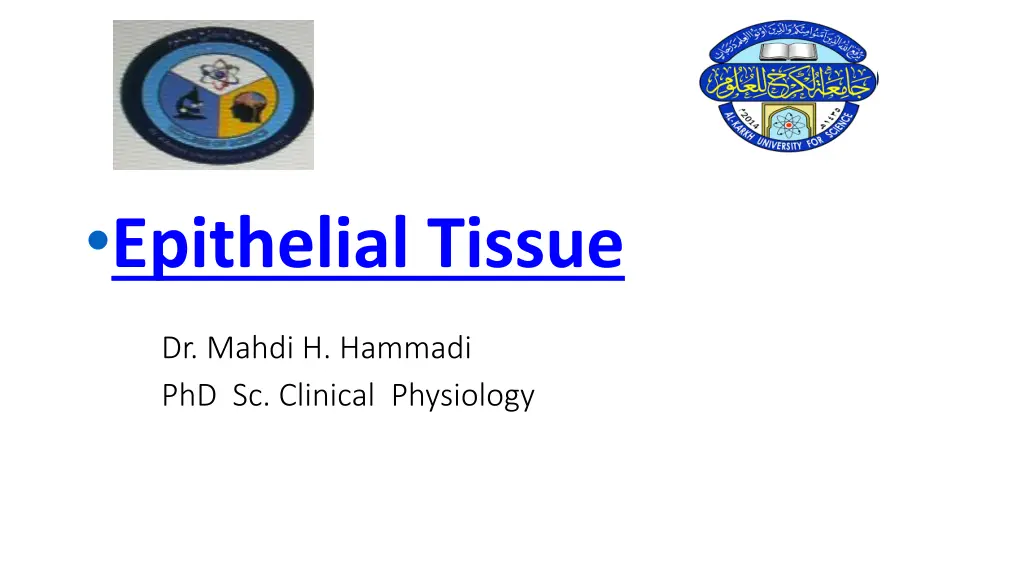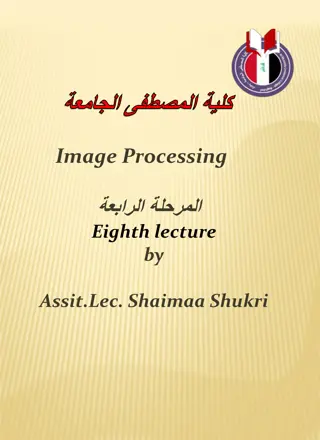
Understanding Epithelial Tissue in Human Body
Explore the characteristics of epithelial tissue, its types, specialized contacts, vascular properties, regeneration capabilities, and classification based on cell layers and shapes. Learn how epithelial cells form continuous sheets and serve various functions in the body.
Download Presentation

Please find below an Image/Link to download the presentation.
The content on the website is provided AS IS for your information and personal use only. It may not be sold, licensed, or shared on other websites without obtaining consent from the author. If you encounter any issues during the download, it is possible that the publisher has removed the file from their server.
You are allowed to download the files provided on this website for personal or commercial use, subject to the condition that they are used lawfully. All files are the property of their respective owners.
The content on the website is provided AS IS for your information and personal use only. It may not be sold, licensed, or shared on other websites without obtaining consent from the author.
E N D
Presentation Transcript
Epithelial Tissue Dr. Mahdi H. Hammadi PhD Sc. Clinical Physiology
Epithelial Tissue Epithelial tissue is a sheet of cells that covers a body surface or lines a body cavity. Two forms occur in the human body: Covering and lining epithelium forms the outer layer of the skin; lines open cavities of the digestive and respiratory systems; covers the walls of organs of the closed ventral body cavity. Glandular epithelium surrounds glands within the body.
Characteristics of epithelium Epithelial tissues have five main characteristics
Polarity Epithelial tissue types
Specialized contacts epithelial cells fit close together and form continuous sheets (except in the case of glandular epithelia). They do this with tight junctions and desmosomes. Tight junctions form the closest contact between cells and help keep proteins in the apical region of the plasma membrane. Desmosomes connect the plasma membrane to intermediate filaments in the cytoplasm. Supported by connective tissue all epithelia are supported by connective tissue. For instance, deep to the basal lamina is
Avascular and innervated even though epithelium is avascular (contains no blood vessels), it s still innervated (supplied by nerve fibers). Regeneration epithelium have a high regenerative capacity and can reproduce rapidly as long as they receive adequate nutrition.
Classification of Epithelia epithelium_tissue
Epithelium has two names. The first name indicates the number of cell layers, the second describes the shape of its cell. Based on the number of cell layers, epithelia can either be simple or stratified. Simple epithelia consist of a single cell layer (found where absorption, secretion, and filtration occur). Stratified epithelia are composed of two or more cell layers stacked on top of each other (typically found in high abrasion areas where protection is needed
All epithelial cells have six sides but they vary in height. For this reason, there are three ways to describe the shape and height of epithelial cells. Squamous cells are flat and scale-like. Cuboidal cells are box-like (same height and width). Columnar cells are tall (column shaped). Simple squamous epithelium
Simple squamous epithelium are close fitting and flattened laterally. They re found where filtration occurs (kidneys, lungs) and they resemble the look of a fried egg. Two simple squamous epithelia in the body have special names reflecting their location.
Simple columnar epithelium simple-columnar-epithelim
Pseudostratified columnar Pseudosratified-columnar-epithelium
Stratified cuboidal epithelium Stratified-Cuboidal-Epithelium
Stratified columnar epithelium stratified_columnar_epithelium
Transitional epithelium transitional_epithelium



![Lec [2] Health promotion](/thumb/274962/lec-2-health-promotion-powerpoint-ppt-presentation.jpg)
